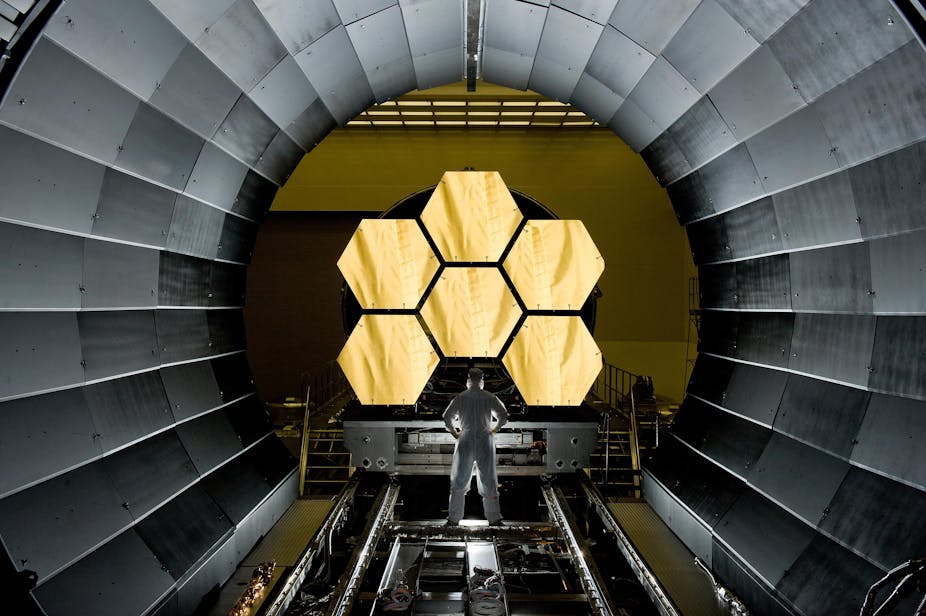The James Webb Space Telescope will be Earth’s premier space observatory for the next decade, serving thousands of astronomers worldwide. However its scientific mission will be limited. Unlike Hubble, which is nearing the end of its scheduled life, the James Webb will cover a much smaller part of the electromagnetic spectrum. Instead, a proposed high-definition space telescope is the only way to image Earth-like planets orbiting others stars and study them in detail.
While such a project is being studied by a consortium of scientists in response to a NASA call for ideas for large future space missions, it has so far not been formally approved. But it is really urgent that we start working on this project now, because the planning timescales for large missions of this kind are long. Even if we started to build it right now, it would still not be ready before 2030 at the earliest.
The limits of James Webb
Hubble, in low Earth orbit since 1990, has been a great success and has demonstrated the many advantages that space telescopes have over ground-based telescopes. Its successor, the James Webb, which is due for launch in 2018, is an even larger instrument, with a 6m diameter mirror compared to Hubble’s 2.4m. Just like Hubble, it will be able to avoid the disturbing effects of the Earth’s atmosphere.

Its scientific mission includes searching for light from the first stars and galaxies and to study the formation and evolution of galaxies. This is more easily achieved by measurements in the near-infrared, which is why it will not measure visible or ultraviolet light like Hubble. While James Webb will be able to deliver some amazing science – it will collect much more light and will be able to look deeper and farther back in time in the universe – the lack of ultraviolet measurements is a major drawback. Ultraviolet can only be observed by space telescopes like James Webb, it cannot be picked up from the ground as it is blocked by the Earth’s atmosphere. Astronomers will therefore completely lose access to UV when Hubble dies.
High definition is the way forward

The proposed High Definition Space Telescope, which would have a 10-12m aperture, would be tuned to work in the UV and visible, as well as the infrared.
The aim of the NASA project is to understand the technical challenges now so that they can be solved before any construction begins.

A facility would be a general, all-purpose observatory that would deliver some amazing and often unexpected science. However, the most compelling case for this telescope and one of the most exciting pieces of science that can be conceived, I believe, is the ability to image tens of Earth-like planets orbiting others stars and study them in detail. By looking at the chemical signatures in their atmospheres, it will be possible to work out if life exists and understand how common it is in our galaxy.
To do this, the telescope would be fitted with a disk to block the bright surface of stars, which would allow direct imaging of exoplanets. The group studying the telescope says most of the technologies needed for the mission are already being developed as part of other NASA programmes. The telescope could therefore be credibly be put forward to NASA’s Decadal Survey in 2020, which will identify and prioritise scientific questions and observations.
In the meantime, while we prepare for this over the next couple of decades, we should consider going back to Hubble with the next generation of human-carrying space vehicles, such as NASA’s Orion capsule, and service it at least one more time.

